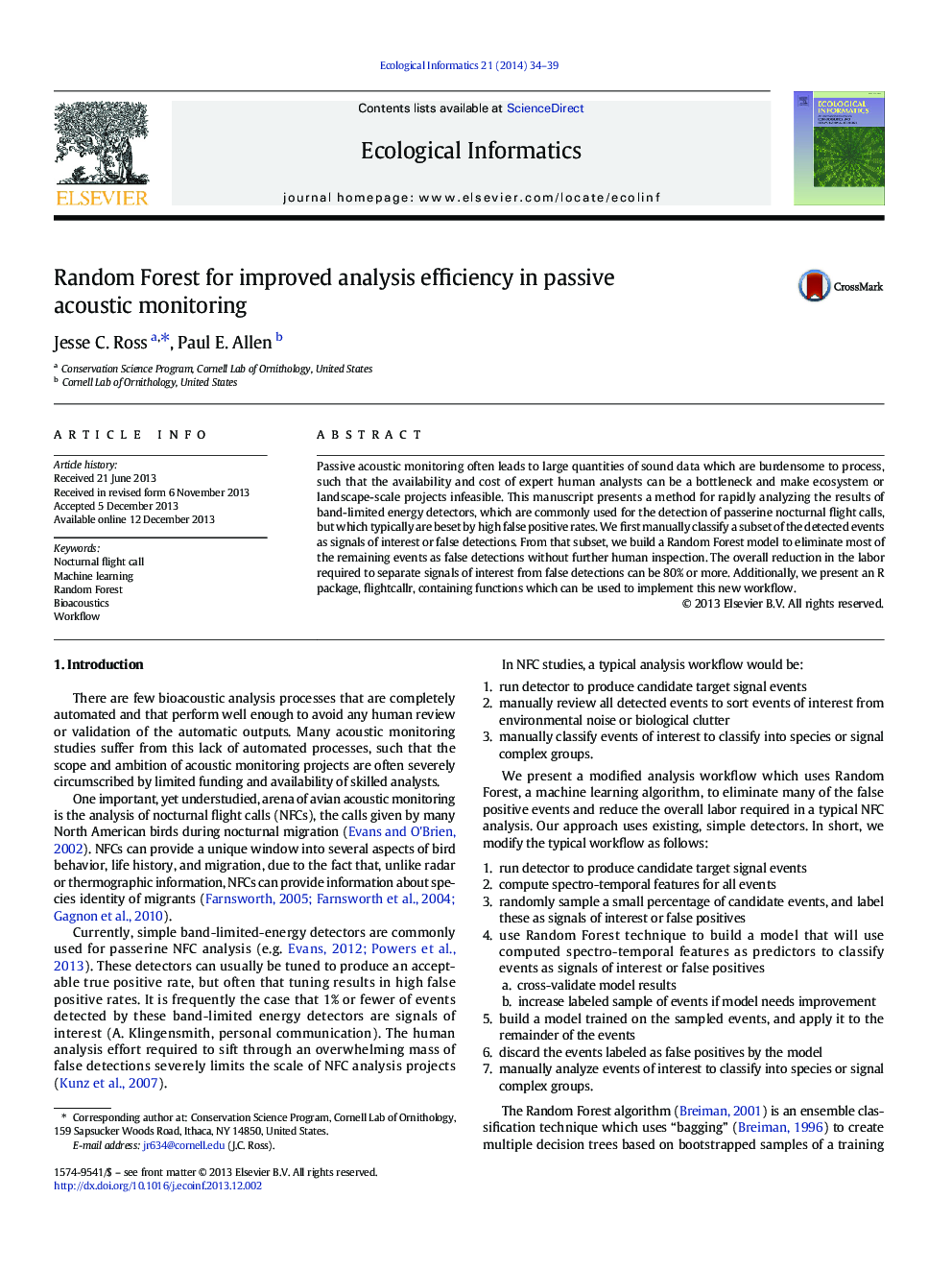| Article ID | Journal | Published Year | Pages | File Type |
|---|---|---|---|---|
| 4374893 | Ecological Informatics | 2014 | 6 Pages |
•Random Forest can improve the performance of detectors of simple avian vocalizations.•Overall reduction in analysis labor can be 80% or more.•Increasing the efficiency of data processing enables larger-scale analyses.•An R package containing functions enabling this type of analysis is made available.
Passive acoustic monitoring often leads to large quantities of sound data which are burdensome to process, such that the availability and cost of expert human analysts can be a bottleneck and make ecosystem or landscape-scale projects infeasible. This manuscript presents a method for rapidly analyzing the results of band-limited energy detectors, which are commonly used for the detection of passerine nocturnal flight calls, but which typically are beset by high false positive rates. We first manually classify a subset of the detected events as signals of interest or false detections. From that subset, we build a Random Forest model to eliminate most of the remaining events as false detections without further human inspection. The overall reduction in the labor required to separate signals of interest from false detections can be 80% or more. Additionally, we present an R package, flightcallr, containing functions which can be used to implement this new workflow.
